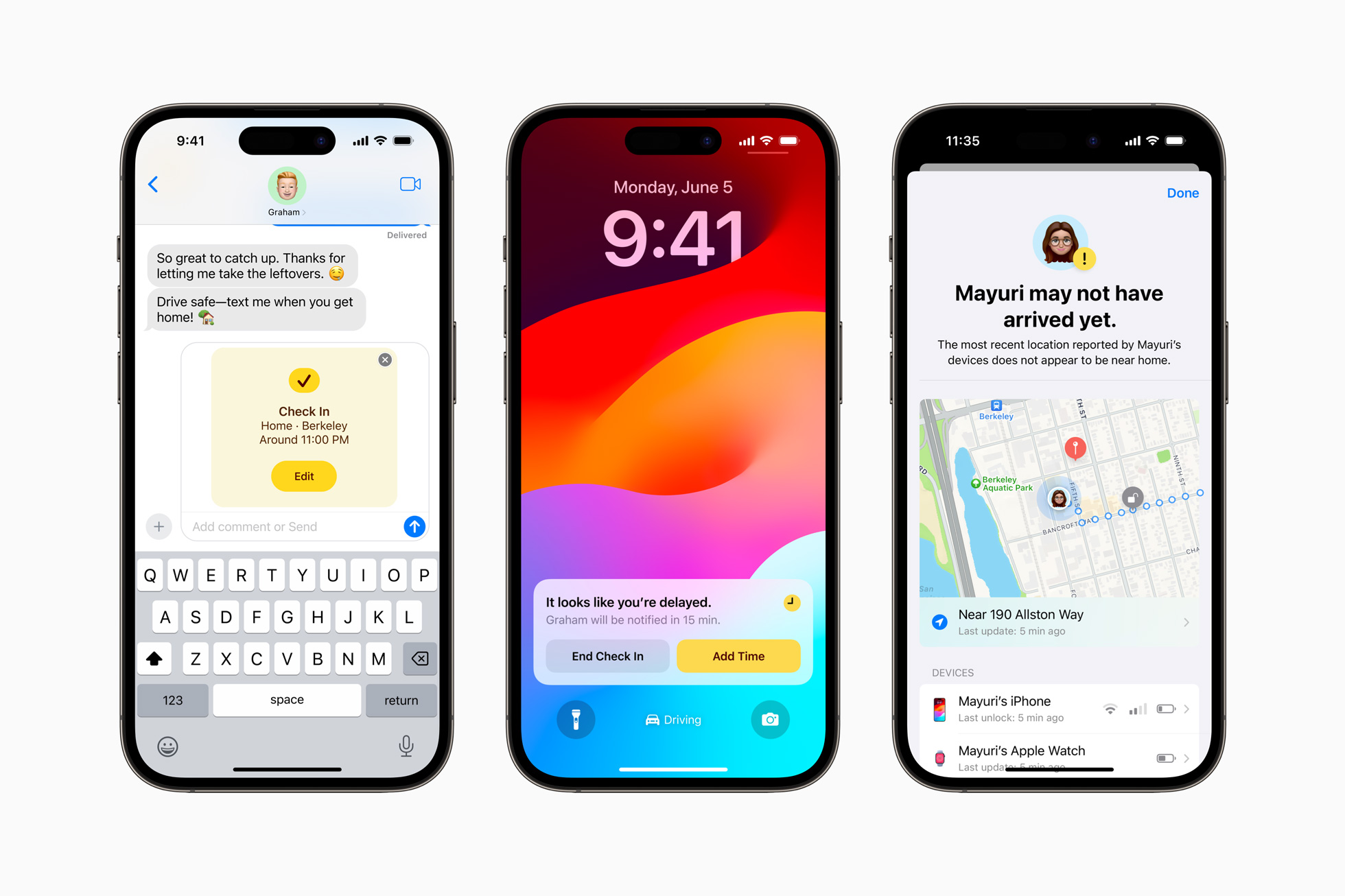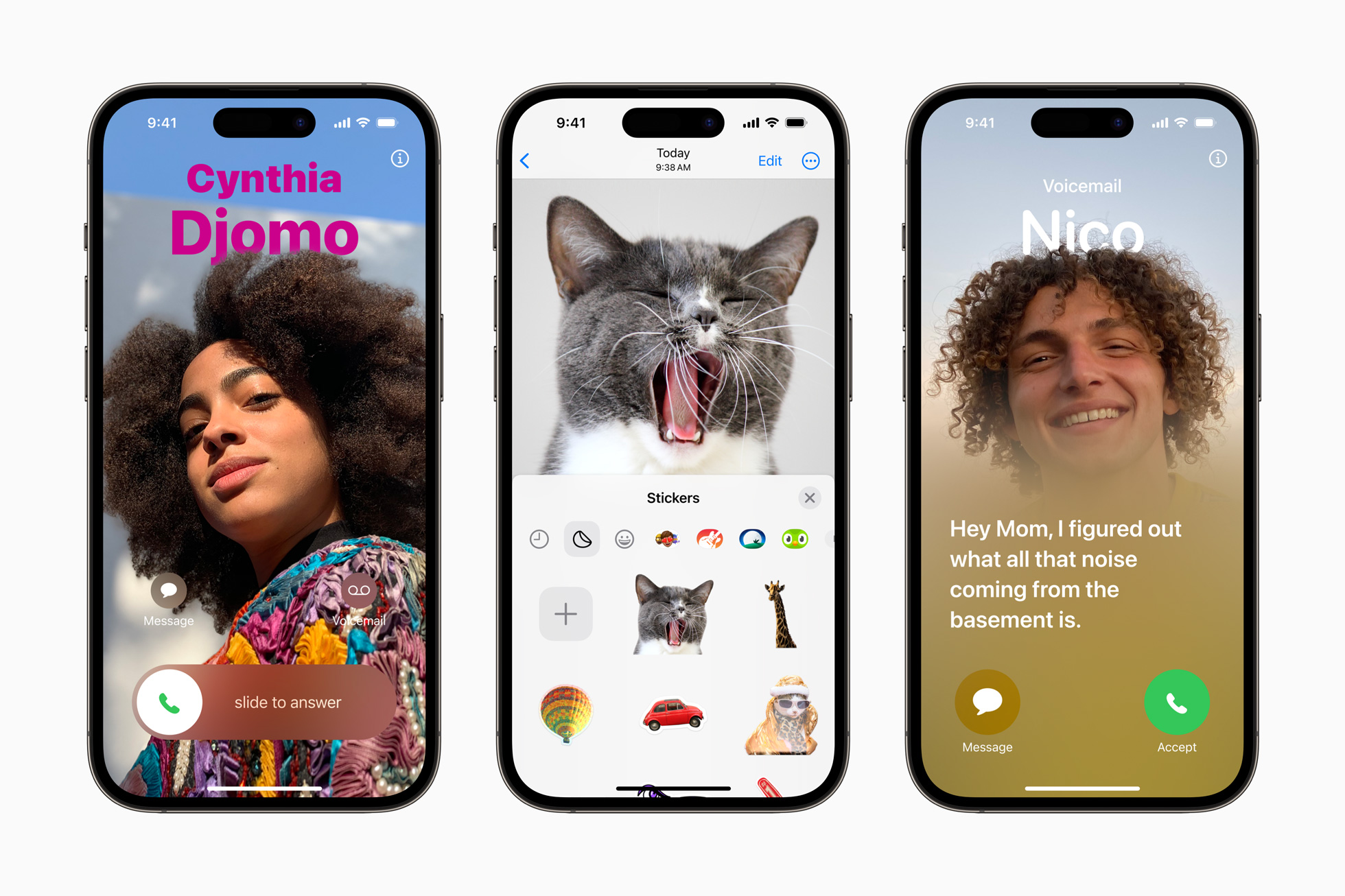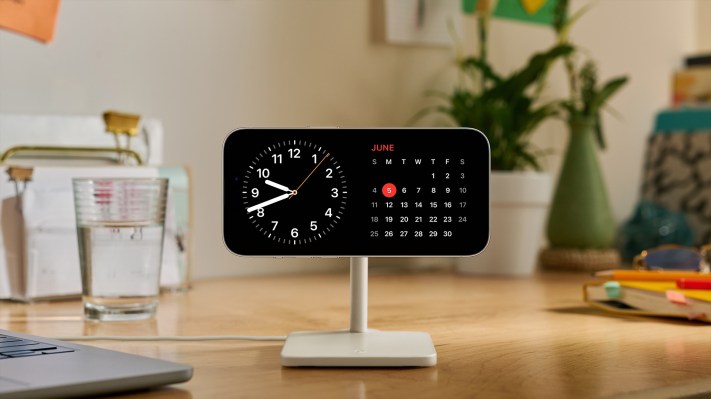Just a few months before Apple launches the Apple Vision Pro with a brand-new operating system, Apple is releasing iOS 17 for the iPhone. Yes, 17 feels like a big number.
And in many ways, iOS has reached a point of stability and maturity that we are all looking for. If you’re updating from iOS 16, you will feel right at home. Sure, iOS 17 features many small and big changes. But iOS 17 isn’t going to be a frustrating update. And that’s a good thing.
Low-level changes
At the operating system level, the two most visible changes are the new StandBy mode and new interactive widgets.
With StandBy mode, users can take advantage of their phone when they are not using it. If you have a MagSafe dock, you can put your phone down in landscape and it will automatically start displaying quick, glanceable information.
There are three different ways to use StandBy mode. You can use it with two interactive widgets side by side. iOS 17 uses the same widgets that you can also use on your home screen. For instance, you can put the weather forecast in the left widget and a list of your next calendar events in the right widget.
Like on your home screen, you can also create stacks of widgets and circles through these widgets depending on the information you need. I don’t know why, but this has been an instant hit with me this summer when I was testing the beta version of iOS 17.
If you receive a notification, you can view them in StandBy mode. You can also interact with Siri without having to put your phone back in portrait.
The two other modes are a full-screen clock and a photo mode that shuffles through your photo library or a specific album. This mode would work particularly well on a HomePod with a built-in display. Maybe next year…
As for the clock, there are five different styles to choose from. The idea here is that your iPhone could potentially replace your old and dusty FM radio alarm clock. Your screen adapts to low light.
On the home screen, the big new addition is interactive widgets. Over the past few years, widgets have been a massive hit for iPhone users. And Apple is iterating on this success with new features that can be leveraged by developers to create widgets with some basic forms of interaction.
Apple has already updated some of its widgets. For instance, the new Home widget lets you trigger home accessories in a tap without having to open the Home app or use Siri. This is particularly useful for blinds or door locks. Apple’s content apps have also all been updated to add some interactivity, such as Music, Books and Podcasts.
Other low-level changes are more subtle. For instance, the keyboard has been completely overhauled with improved autocorrect using transformer language models in English, Spanish and French. Autocorrected words are now underlined so that you can quickly spot if your iPhone betrayed you behind your back (or behind your cursor).
And dictation has received its annual upgrade. I was already using dictation for many text messages, but it’s even easier to use it as you can now dictate a few words, type a few words, dictate the rest of the sentence without switching back and forth between dictation and typing.

Image Credits: Apple
High-level changes
A new version of iOS usually means that nearly all built-in Apple apps have received an update as well. The common thread here is that many updates focus on bringing quality-of-life features.
For instance, the Messages app has received a massive upgrade. Somehow, this space is always evolving with WhatsApp, Telegram and Apple adding new features every year. They also draw some inspiration from each other… For example, in a conversation thread, you can now swipe on an individual message to reply inline.
But there are some more significant changes. The search feature has been completely overhauled. It’s now much easier to type someone’s name, then select their name to search for keywords in a specific conversation.
Audio messages have also been improved. You can finally pause your recording and resume it later. You don’t have to stay in the app to listen to incoming messages. And audio messages are now automatically transcribed on your device. So good.
Another interesting new feature is Check In. It’s a mini app in Messages that helps you send a message to your loved one when you’re safely back at home. Many people tend to forget to send a quick text message, so you can just set up Check In when you’re leaving someone’s home and your iPhone will automatically send a message when you reach your destination.
On the communication front, FaceTime received two big changes. First, you can now leave video messages when someone doesn’t pick up. Second, you can use FaceTime on an Apple TV with your phone acting as the webcam and microphone.
And if you still use your phone to call people, you’ll be happy to hear that Apple spent some time updating…the Phone app. You can now create a contact poster, which is a full-screen representation of yourself that will appear when you call someone.
Just like your profile photo, your contact poster will be shared with your contacts as you start talking with them over iMessage. The editing screen works a bit like the wallpaper editing feature that was introduced with iOS 16. It’s very easy to create something that looks nice.
And if you rarely pick up the phone, you can now send incoming calls to voice mail directly and read a live transcription of the voice mail. If it’s a delivery person, you can change your mind and pick up the phone.
For those of you who use Apple Maps (in addition to me), Apple finally added support for offline maps. This has been the #1 pet peeve from Google Maps users — no more.

Image Credits: Apple
All the rest
I am not going to list all the changes in iOS because that would make this review too long. You will see the smallest changes over time when you start using your iPhone with iOS 17.
But here’s a quick list of some updates that would be worth highlighting in a changelog:
- You can initiate an AirDrop by bringing two devices close together. It also works with contact posters (Apple calls it NameDrop).
- AirDrop continues over the internet so you can leave the room during an AirDrop transfer.
- FindMy lets you share an AirTag with someone else in your family.
- Safari lets you create different profiles with separate tabs, history and cookies.
- You can share passwords and passkeys with other people. Goodbye, 1Password.
- When you’re using Apple Music in a car with CarPlay, other passengers can join the session and control the music — no subscription required.
- EV routing has been improved in Apple Maps.
- Your iPhone automatically suggests AirPlay speakers and TVs near you.
- There are a bunch of AirPods improvements.
- The main search feature has been redesigned. It takes a bit of time to get used to it but it works well.
- There are new mental health assessments in the Health app.
- Journal, Apple’s journaling app, is coming later this year.
- You can say “Siri” instead of “Hey, Siri.”
Overall, iOS 17 is a nice and polished update. It feels like a refined version of iOS 16 without some of the rough edges. TL;DR, it’s an improvement.
